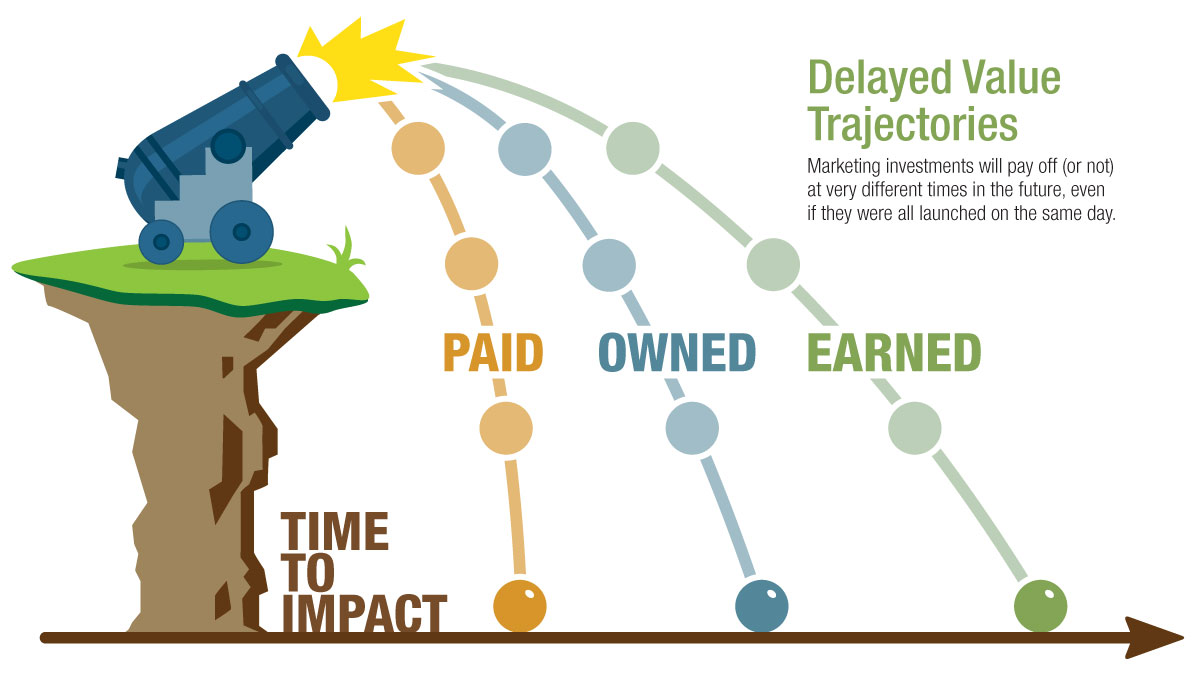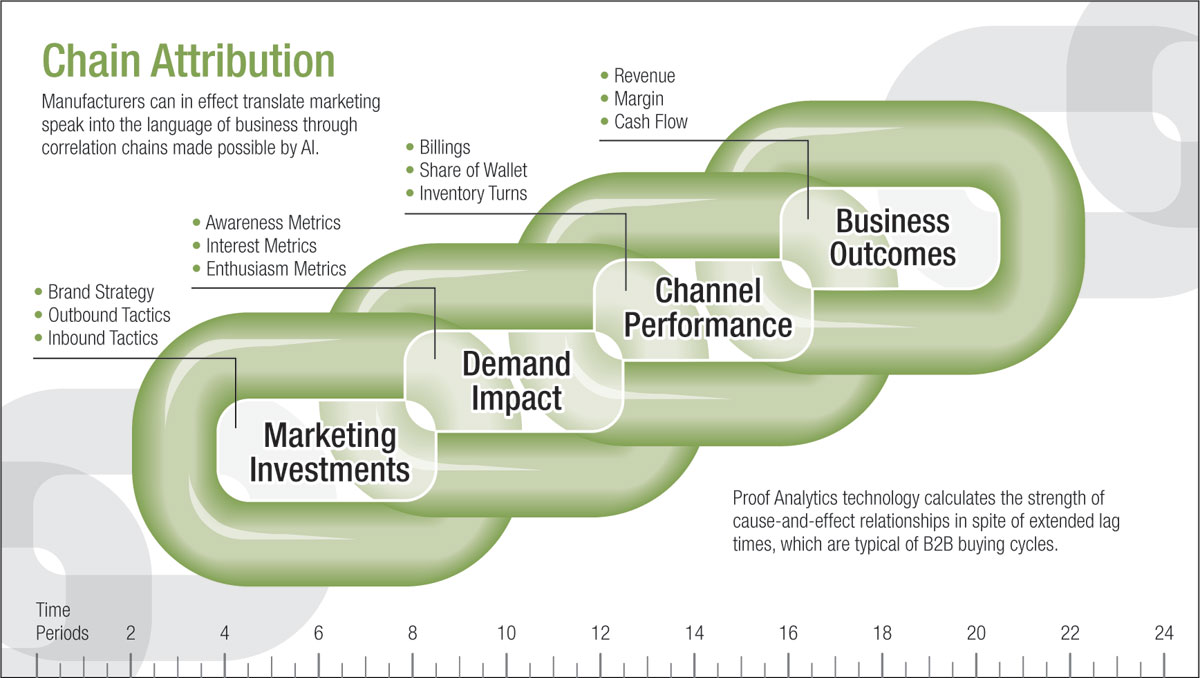3 Ways AI Can Translate Marketing Speak Into a Language Every Exec Understands
By Neil Ruffolo, Director, Digital Strategy
I like to use idiomatic expressions with my kids. A few simple words can convey wisdom and provoke thought about important things. Take for example “A bird in the hand is worth two in the bush.” This saying opens the door to ponder things like ambition, risk, envy, and gratitude. One of my favorites is “Don’t lose sight of the forest for the trees” to warn against the pitfalls of focusing on parts without considering them together as a whole. And to avoid the opposite extreme I will remind them that “The Devil is in the details.”
In life as in business, things that seem at first to be mutually exclusive are not necessarily so. This is very much the case when it comes to unifying product, marketing, sales and investment team leaders around a shared vision for growth. When this happens, an organization can execute a synchronized go-to-market strategy that will achieve aggressive goals, like those set by a new private equity owner. To this end, systems have emerged that combine time-tested methodology with artificial intelligence machine learning. This gives industrial marketing leaders the ability to provide proof of business impact rather than mere performance indicators. It also avoids the kind of communication breakdowns that can lead to disunity and derail an otherwise viable plan for growth.
The Marketing-Finance Communication Gap
It often seems like those in Marketing speak a different language than those in Finance –– even when using the same words. Take for instance the word “conversion”, which in some circles only means turning a prospect into a paying customer. By this definition, the financial value is clear because it directly relates to revenue. Yet “conversion” can mean a variety of things to a marketer. Depending on the tactical goal, a conversion could be a webinar registration. Or it could be the acceptance of a marketing qualified lead (MQL) as a Sales Qualified Lead (SQL). Or it might even be a simple interaction, like an online video view. Similarly, the term “user” in a manufacturing context usually refers to the end user of a product –– often the buyer or an influencer. However, a “user” in marketing is someone who interacts with digital media, like a website, mobile app, social network, or search engine. The resulting communication breakdown can be a stumbling block for growth phase organizations.
Marketing jargon reflects a focus on tactical strategy execution. So KPIs tend to report details that might seem irrelevant to someone looking at it from a higher-level perspective. This can lead to the perception that Marketing is not seeing the forest for the trees, so to speak. At the same time it can seem to Marketing that Finance executives do not recognize that healthy trees are necessary for the forest to thrive. And therein lies the rub for business leaders who know both perspectives are vital to achieving growth.
Artificial Intelligence Technology To The Rescue
I expect Adobe, Google and Oracle will continue to lead the way when it comes to AI and machine learning applications in marketing analytics, attribution, predictive targeting, and personalization. However, the most popular general purpose platforms are geared for relatively short buying cycles, as well as complete online visibility through to the point of purchase. In this typical B2C eCommerce scenario it’s relatively easy to attribute revenue to specific marketing investments. Needless to say, this is not the world that many manufacturers inhabit. Long buying cycles with limited end user interaction is the norm for a lot of industrial brands selling through distribution channels. So complementary, fit-for-purpose platforms have emerged to address these B2B-specific issues. Although I’m not a data scientist, I have been around long enough to recognize that Proof Analytics represents something new and unique. Here are three things that make it a potential breakthrough for manufacturers:
1. Time-Shifted Relationship Analysis
The impact of marketing activity on sales productivity is often obscured by a lag time between cause and effect. This is especially true for industrial equipment and supplies with extended buying cycles. In addition, each element of a campaign –– a new product launch for instance –– has a different time-to-impact. This means the payoff of investments in paid, owned and earned media will come at different points in the future. Using purpose built software to compute these lag times, it becomes evident that campaign elements deliver value, not the campaign itself. In fact, I suspect intuitive understanding of this fact is another reason why marketers are drawn to activity KPIs. In any event, human analysts using general purpose analytics platforms cannot isolate and identify such time-shifted relationships. Given two 24-period sets of time series data, Proof Analytics can detect any correlation if it’s there –– even when cause and effect are separated by many months. Time-shifted data analysis is not only a game changer when it comes to marketing strategy and planning. It also makes the next item possible.

2. Computed Attribution Chains
Seasoned marketing pros understand how nurturing a receptive audience drives awareness and prompts independent research that leads to consideration, procurement, and customer loyalty. This linkage is not so obvious to the skeptics who control the purse strings. Without a clear and irrefutable link to business outcomes, they are not likely to see much value in things like clicks, followers, watch time, or even sales leads and Return On Ad Spend (ROAS). Proof Analytics bridges the gap by definitively linking marketing tactics to things with inherent business value, like revenue, margin and cash flow. This is done via correlation chains based on a framework that makes sense for a manufacturer that sells through channel partners (see figure below). This makes marketing attribution possible even when the entire prospect journey and point-of-purchase is not visible from beginning to end.

Just to clarify, we’re not talking about a model here. Everyone who has watched a weather forecast knows models can be completely wrong. Proof Analytics’ calculations are as reliable as the data you put in. According to the developers, its computed output does not rely on probability and/or assumptions the way a model does.
3. Enterprise-Class Insight Accessibility
It’s worth noting that Proof Analytics is part of the first wave of purpose built SaaS platforms putting advanced AI technology within reach of manufacturers of any size. Not only is it affordable with a free version available for limited use. It does not require the kind of big centralized data warehouse only available to those at large enterprises. According to Melissa S. Kovacs, Ph.D., a lecturer on quantitative analytics and economics at Arizona State University.:
“Proof’s algorithmic bedrock is a series of parametric correlations designed to robustly hold validity with small samples, sometimes as few as 10 pairs of data. This means companies do not need to have large collections of data in order to benefit.”
Many marketing leaders are “accidental executives” who did not pursue a management role. For these folks, career advancement was a natural progression following from brand strategy, product management, sales enablement, or creative communication success. So it is important to recognize that the frame of reference of a CMO can be very different than that of the CFO and other executives, but no less valid. Yet the resulting miscommunication can thwart the best efforts of Marketing to earn C-suite cred and secure adequate resources. More importantly, it can stunt an organization in its attempt to achieve transformational growth. With so much at stake, facilitating a meeting of the minds should be a priority for all business leaders.
Armed with the right business intelligence and analytics tech stack, industrial marketing leaders can stop reporting on the number of trees that have been planted and start explaining how the forest is growing. It’s a subtle distinction that can make a big difference.


